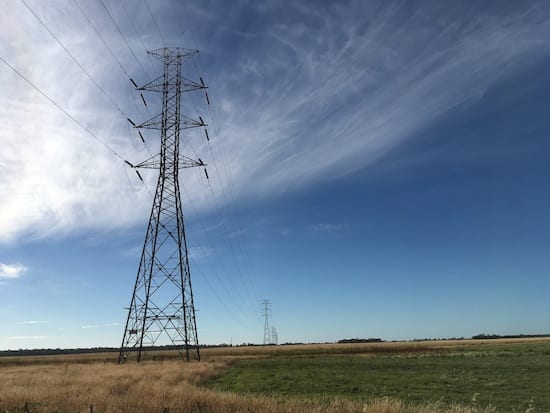One relatively uncontroversial statement among advocates of climate action is that however well we’re doing now, it needs to be far faster.
One clean-energy-adjacent infrastructure venture that has received far more love than actual clean energy by Australia’s conservative government has been the build-out of transmission infrastructure. In New South Wales, for instance, Prime Minister Scott Morrison lent support to new transmission lines (on the grounds that it was paired with more fossil fuel extraction). In January 2019, Morrison pledged financial support to fast-track an additional interconnector between Tasmania and Victoria, named the ‘Marinus Link’, and in recent weeks, part of his post-COVID19 economic recovery plan involves removing environmental protection hurdles for that transmission link.
“While the expedited assessment process will help the project come online earlier, it does appear to come at the expense of the environmental approvals process, including under the Environmental Protection and Biodiversity Conservation Act, which the Morrison government has looked to curtail.”, wrote RenewEconomy’s Michael Mazengarb.
Environmental and social factors in big and pivotal development projects like the Marinus Link are deeply intertwined. Often, much opposition from people comes from demands for greater environmental protection. And human health and safety is deeply linked to ecology and biodiversity. The simple anxiety that stems from Morrison’s latest intervention is that speeding up the construction of a large technological renewable energy integration project actually decreases the possibility of it happening faster.
Australia is going to have to build a fair quantity of new transmission infrastructure, if vast quantities of wind and solar are to successfully replace coal and gas fired power stations. That is a given, and outlined neatly in the Australian Energy Market Operator’s Integrated System Plan.
The first thing that came to my mind when I saw the data in the ISP was Germany’s build-out of transmission infrastructure, and how it has drawn significant backlash. This backlash has made new German interconnection more expensive and badly delayed, and that has delayed the build-out of renewable energy and is impacting Germany’s ability to meet its climate targets.
This was covered recently in RenewEconomy, in a piece by Sophie Vorrath. That piece also considers the backlash to a line associated with Tasmania’s Marinus Link, associated with the Robbins Island Wind Farm, which is inspiring the creation of new opposition groups, frustrated responses from developers and, of course, delays. The wind farm itself drew a backlash that inspired an intervention from former Greens leader Bob Brown. “People living in the state’s Loongana Valley community had not bargained on having a 60-90 metre wide easement with 45-60 metre high transmission line towers as part of their view”, wrote Sophie.
What is happening in Tasmania is not a ‘right wing’ phenomenon. It is dangerously bipartisan. Climate action will, inevitably, be a moment in which new technology must be created, no matter how deeply we reduce demand and cut consumption. If this process impinges on social and environmental constraints, the backlash won’t be limited to one worldview. In Norway, for instance, much of the opposition to large-scale wind power comes from environment groups, such as Friends of the Earth Norway.
It is becoming increasingly clear that even if new climate technology is cheap, efficient and even popular with politicians, it still might fall at the final hurdle of winning community support. Transmission lines have never been loved by neighbours, at the absolute best they’ve been accepted or tolerated. As I read through AEMO’s ISP, it is clear that their least-cost plan hinges very heavily on the wide, webbed network of transmission infrastructure that spreads across Australia:
“[The draft ISP’s renewable energy zones analysis] does not consider the local issues for development however, including community support, land access and approvals and commercial decisions by developers that may impact individual preferences for VRE development”, declares the ISP. Social and environmental factors fall well outside of the scope of AEMO’s investigations, but I actually cannot think of whose scope they do fall under, besides individual corporations responsible for developing each asset.
That is not reassuring. Large-scale solar and wind developers learnt over a decade the importance of strong community engagement and ownership schemes, but there is little chance that those developing transmission assets will come prepared with the same experience. Perhaps one old idea could be revived – community owned transmission networks, as toyed with but discarded in Germany, in 2013. Transmission lines have long been associated with health fears around electromagnetic radiation; perhaps another ‘wind turbine syndrome’ style campaign might be run by vested interests to exploit existing community backlash using pseudoscience and misinformation.
None of this is guaranteed, but the risks are real and little-discussed. It is time to consider the community and social factors underpinning a non-optional critical component of Australia’s energy transition.











